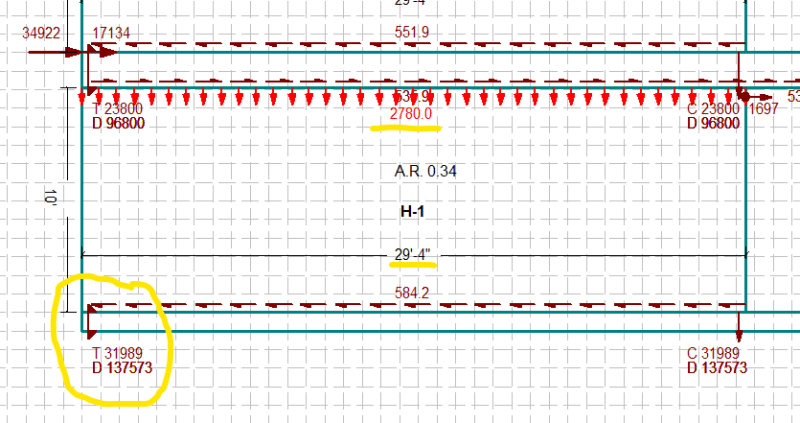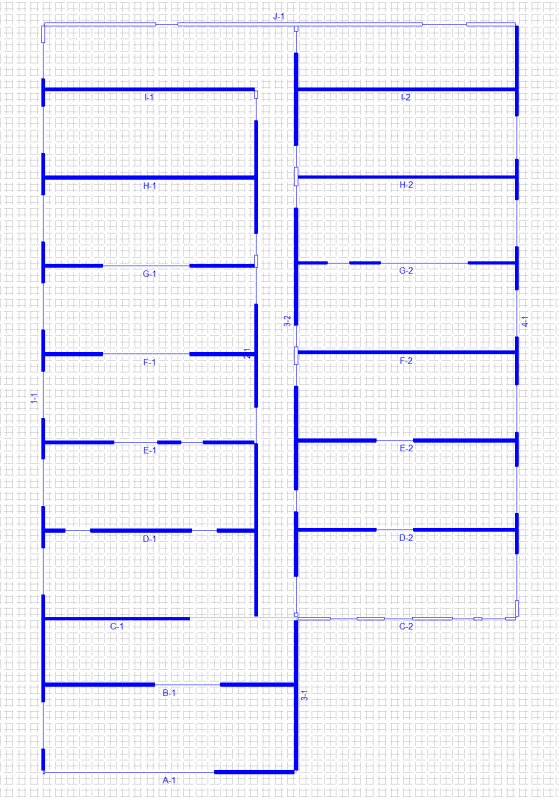Hi everyone,
When determining the holdown forces at the ends of a wood shearwall segment, let's say a 29.5' long segment (example below), does the entire dead load applied resist the overturning forces?
Or could only a portion of dead load applied to the wall be considered if the stud shearwall is not rigid enough to drive the dead load out to the ends - for example 5' from the edge on each side of the wall that would contribute. Which would be the proper approach?
Thanks in advanced.

When determining the holdown forces at the ends of a wood shearwall segment, let's say a 29.5' long segment (example below), does the entire dead load applied resist the overturning forces?
Or could only a portion of dead load applied to the wall be considered if the stud shearwall is not rigid enough to drive the dead load out to the ends - for example 5' from the edge on each side of the wall that would contribute. Which would be the proper approach?
Thanks in advanced.


